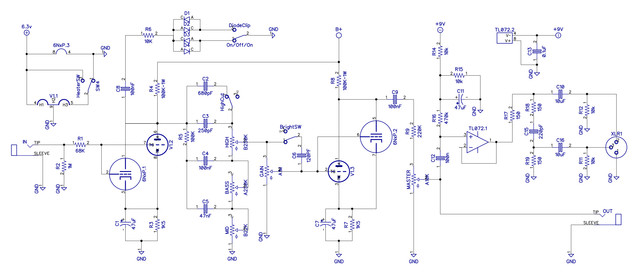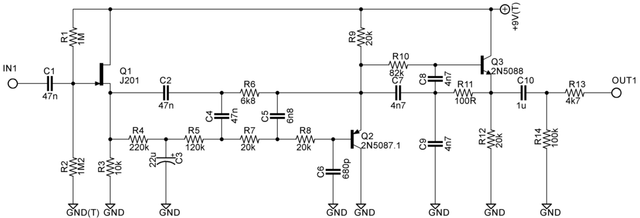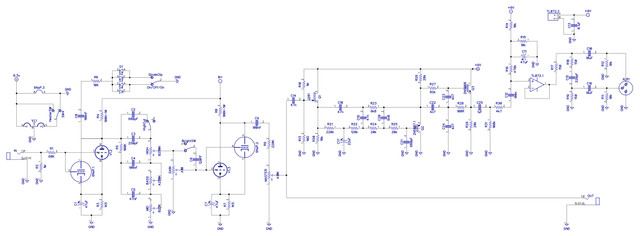sonolink said:
I'm updating the schem, trying to understand and learn here.
Great, nice that you not just want to add this and correct that, but also want to know why.
Note that the things I brought up were not in the 'absolutely necessary' category, and as you've seen could also be debatable,
but while at it, before building it, why not add them to prevent those 'eventual things', especially since they're no/low-cost additions.
The notion of 'towards blameless' comes to mind, as I've seen it used by Douglas Self in the context of circuit design.
Just a couple of question about ClintRubber corrections please:Is this to "drain" to GND the part of the circuit between C8 pin2 and the Switch when the switch is in the Off position?
Yes.
Without further measures you won't have control over the signal-value at the time of switching, but the least one could do is to arrange that both nodes that will soon be meeting by the switch-closure (& bounce...) are at the
same DC-value. (Note that 'same' is enough, it's not necessarily 0V)
I understand the purpose but not the way it works. Could someone explain please?
Same idea here.
Have a look at this schematic (of the link below) for instance, the 2M2 resistor across the BRIGHT switch.
(Likewise the 100k resistor near the THICK switch, same purpose)
https://www.audioservicemanuals.com/p/peavey/peavey-tg/1335415-peavey-tg-raxx-schematic
Bye





